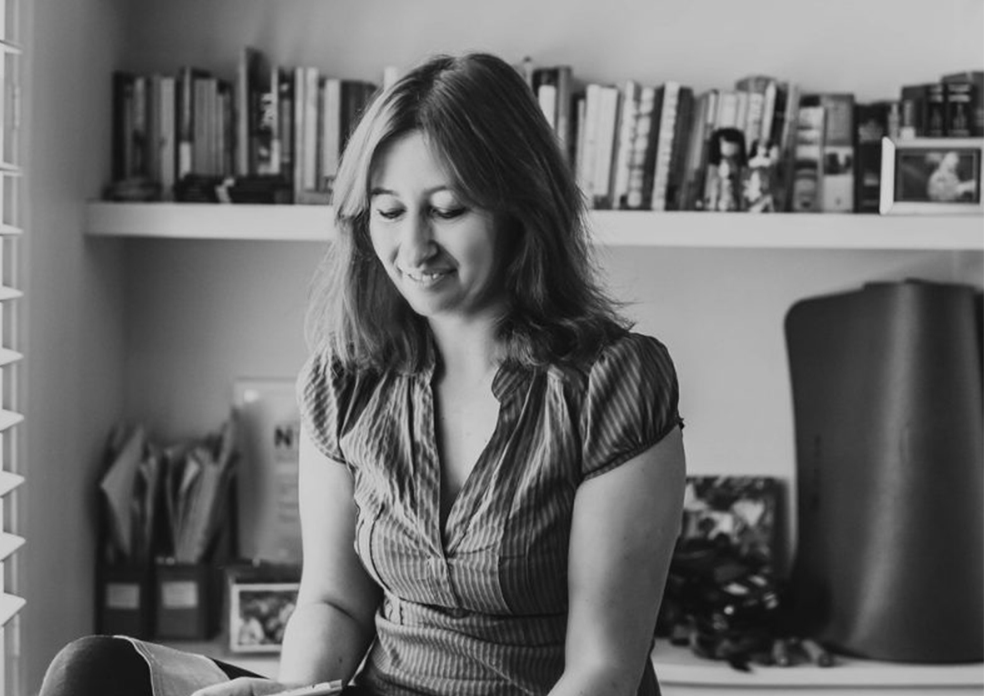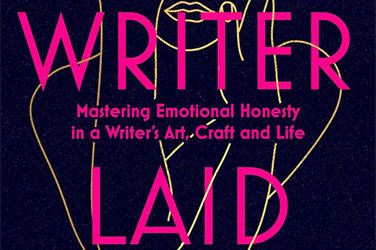
- Free Article: No
- Review Article: Yes
- Article Title: Fighting nonesty
- Article Subtitle: Lee Kofman on the creative process
- Online Only: No
- Custom Highlight Text:
Reading craft manuals may be another mode of procrastination for aspiring writers, but Lee Kofman’s latest book, The Writer Laid Bare, is well worth the time. Her sage advice, interwoven with an intimate account of her own creative development as a migrant writer, makes fascinating reading.
- Article Hero Image (920px wide):

- Article Hero Image Caption: Lee Kofman (photograph via author's website)
- Featured Image (400px * 250px):

- Alt Tag (Featured Image): Merav Fima reviews 'The Writer Laid Bare: Mastering emotional honesty in a writer’s art, craft and life' by Lee Kofman
- Book 1 Title: The Writer Laid Bare
- Book 1 Subtitle: Mastering emotional honesty in a writer’s art, craft and life
- Book 1 Biblio: Ventura Press, $32.99 pb, 327 pp
- Book 1 Readings Link: booktopia.kh4ffx.net/4enzRr
Kofman reveals that she experienced severe writer’s block for several years, until she realised that her writing suffered from ‘nonesty’, a term she coined to refer to the lack of emotional honesty in her work from that period. Now she is extremely honest about the hardships she faced over a decade ago and the remedies she discovered, which she shares with the reader. Only after over-coming these difficulties was she able to compose her profoundly personal memoirs, The Dangerous Bride (2014) and Imperfect (2019). These books are testament to the fact that, ‘Creative catastrophes … can produce great beauty.’
Kofman’s conviction about the centrality of emotional honesty to the writer’s success can be encapsulated by her assertion that writers must
foster the art of deep observation to reach towards the dark, the complex, the paradoxical, the tense, the raw, and towards the truths of the stories we tell. For such purposes, the writer’s starting point should be themselves, no matter what genre they work in, because our self is the prism through which we create art. Artistic writing begins with self-awareness of, and honesty about, our psychological landscape – all those messy emotions, thoughts and memories that make us who we are.
All of this takes great courage and perseverance, especially when writing ‘what makes you blush’, as Kofman urges.
Kofman’s lyrical prose is engaging and her passion for helping other writers to fulfil their own literary goals is palpable throughout this beautifully produced book. The eye is immediately drawn to Alissa Dinallo’s black cover design, overlaid with fluorescent pink lettering and a delicately delineated gold figure covering her face with her hands. Far from being patronising or condescending, this book teaches by example, applying its wisdom to the exquisite way in which Kofman weaves her own tale with remarkable openness and humility, presenting the book as a kind of hardware store from which the reader may pick the tools most suitable for their particular situation.
In contrast to formulaic or prescriptive writing manuals, Kofman treats the writing of literary works as a sacred act of creation, emphasising the importance of aesthetic as well as moral truth. Evoking the kabbalistic approach to language, grounded in the belief in the mystical power of the alphabet’s letters, Kofman suggests that making art constitutes a means of experiencing the holy, imbuing the creative process with spiritual significance.
Refreshing is the distinction throughout the book between artistic writing of literary quality and commercial or didactic writing that is politically driven. All too often, writing manuals proffer their advice without discerning between the various literary genres, even though the process and requirements tend to differ greatly. The examples she gives of state-sponsored Soviet propaganda clearly illustrate this point.
Impressive in the breadth and scope of her multilingual repertoire, Kofman repeatedly stresses the importance of attentive and wide-ranging reading for any aspiring or established writer. She deftly incorporates illuminating references to works by other writers about the creative process, from Rainer Maria Rilke to Elena Ferrante and Albert Camus, including citations from popular manuals, such as Stephen King’s On Writing (2000) and Anne Lamott’s Bird by Bird (1994). These positions are eloquently supported by pertinent passages from both classic and more recent novels and memoirs. Declaring that ‘to write is to read’, she emphasises the importance of ‘reading up’, namely, choosing books with literary merit that have withstood the test of time, rather than merely striving to keep up with current bestsellers.
In a moving final chapter that addresses the struggles associated with writing during early parenthood, Kofman asserts that she continued writing when her children were small in order to prove to her mother that she could be a mother and a writer at the same time. Indeed, the author’s mother often figures throughout the book as both a motivating force and an ongoing challenge, vividly and humorously capturing the complexity of familial relationships. (Humour, Kofman states at one point, is among the most distinctive features of a writer’s literary voice.) As writers, particularly women, must constantly navigate their multiple and often incongruous identities as spouses, mothers, daughters, and artists, she admits: ‘I struggle to … keep away my mother-and-wife-self when I write.’ Parents of young children will no doubt relate, and will value her encouragement by example, demonstrating that it is possible to realise literary dreams in spite of, or even in tandem with, caregiving responsibilities.
The literary community recently celebrated the thirtieth anniversary of Julia Cameron’s The Artist’s Way (1992). Dubbed the ‘high priestess of creativity’, Cameron was a pioneer in the field of creative recovery and her book has seen a resurgence in sales during the pandemic, with locked-down populations seeking guidance in their diverse creative pursuits. Like Cameron, Lee Kofman approaches the creative process as a spiritual endeavour that demands introspection and self-awareness. As such, The Writer Laid Bare is a worthy successor and a welcome addition to any writer’s bookcase.


Comments powered by CComment